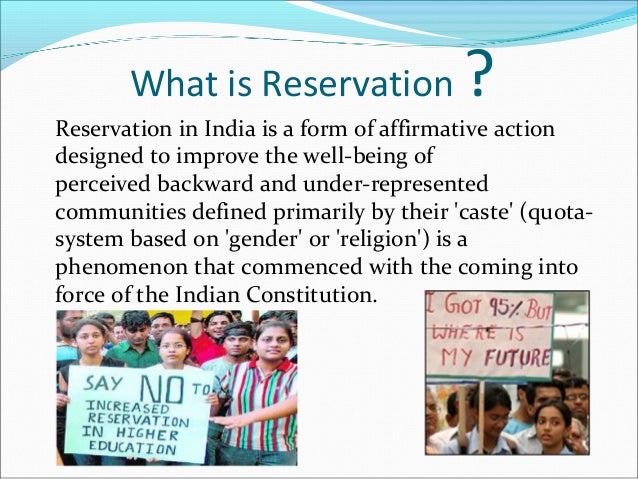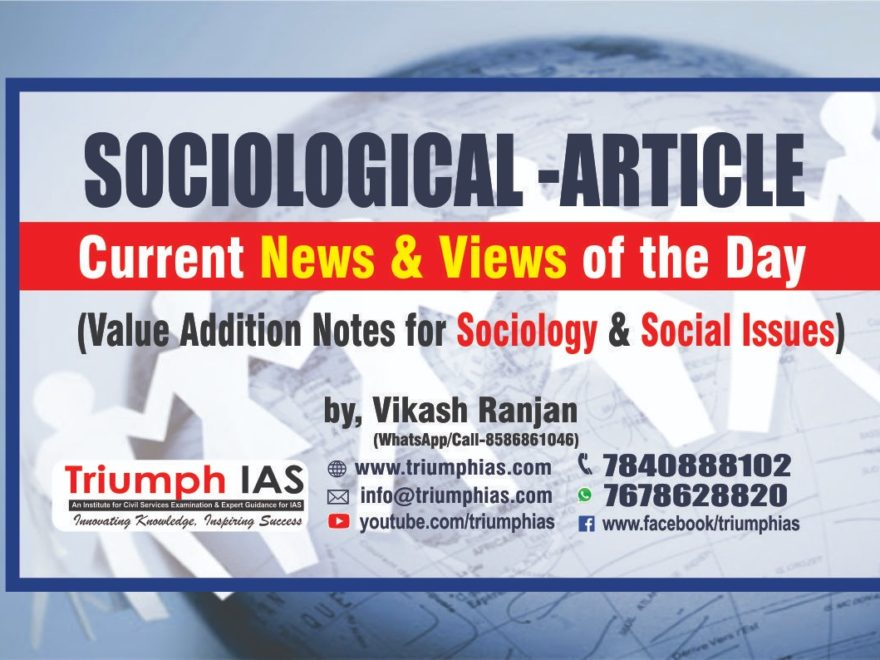Relevance: Mains: G.S paper II: Polity: Mechanisms, laws, institutions and Bodies constituted for the protection and betterment of these vulnerable sections & Sociology
Context:

• Reservations have been one of the most effective techniques of positive discrimination in India.
• Reservation was never been conceived as a mass employment scheme but as the best way to redress of whole history of oppression.
• Gradually, it has created a group of Dalits that validated some criteria of the middle class in terms of education and occupation.
Data:
• While quotas were not fulfilled among the “upper classes” of the public sector till the 1980s.
• In the Central Administrative Services, SCs (about 16% of India’s population) reached 14% of Class C in 1984, 14.3% of Class B in 2003 and 13.3% of Class A in 2015.
• In the Central Public Sector Enterprises (CPSEs), their proportion rose from 14.6% in 2004 to 18.1% in 2014.
• In parallel, the SCs’ literacy rate jumped from 21.38% in 1981 to 66.1 per cent in 2011.
• Similar progress was achieved by the OBCs, a category that started to benefit from reservations many years later, after the Mandal Commission report was implemented by V P Singh.
• In 2013, OBCs – 52% of India’s population according to the Mandal report – represented 8.37% of the Class A in the Central Government Services, 10.01% of Class B and 17.98% of Class C.
• Their percentage in the CPSEs jumped from 16.6%in 2004 to 28.5% in 2014.
Privatisation:
• Today, these achievements may be affected by the new programme of privatisation that has been announced by Finance Minister in the framework of structural reforms.
• According to the new Public Sector Enterprises Policy (PSEP), a list of strategic sectors will be notified where there will be no more than four public sector enterprises — the rest would be merged or privatised.
• But reservations are already undermined by other developments and policies.
• While the percentages mentioned above are on the increase, the trend is different if one looks at the number of jobs they represent, as the public sector is shrinking.
• First, the number of vacancies has surged, from 5.5 lakh in 2006 to 7.5 lakh in 2014 (no data are available since then) so far as central government employment is concerned. The trend has continued afterwards.
• For instance, the number of civil service candidates shortlisted by the Union Public Service Commission (UPSC) has dropped by almost 40 percent between 2014 and 2018, from 1,236 to 759.
• Second, the total number of employees has dropped so dramatically between 2003 and 2012, from 32.69 lakh to 26.30 lakh in the Central Government Services, that the number of Dalits benefiting from reservations has been reduced by 16 percent from 5.40 lakh to 4.55 lakh.
• In the CPSEs, in spite of rising percentages, the number of jobs has decreased from 18.1 lakh in 2011 to 14.86 lakh in 2014.
• In contrast, the number of OBCs continued to rise, from 1.38 lakh to 4.55 lakh between 2003 and 2012 in the Central Government Services.
• But in the CPSEs, the inverted U curve had started: While the number of OBCs benefiting from reservations had jumped from 14.89 lakh in 2008 to 23.55 lakh in 2012, it has dropped to 23.38 lakh the year after.
Lateral entry:
• Reservations have also been undermined by lateral entry in to the bureaucracy.
• By the end of his first term, Narendra Modi implemented one of the promises of the 2014 BJP election manifesto — the creation of lateral entry in the Indian administration.
• This reform was intended to “to draw expertise from the industry, academia and society into the services”.
• In February 2019, 89 applicants were short listed (out of 6,000 candidates from the private sector) for filling 10 posts of Joint Secretary.
• This new procedure undermined the reservations system because the quotas did not apply.
Judiciary:
• The judiciary has contributed to the erosion of the reservation system in different ways during the last two years.
• In a judgment of the Allahabad High Court, which was later upheld by Supreme Court, the University Grants Commission (UGC) was allowed to issue a notification on March 5, 2018, which sought to shift the unit of provision of reservations from a university as a whole to the departmental level.
• Such a shift has reduced the quantum of reserved seats and restricted the entry of lower castes because small departments, where vacancies are few, would be indivisible — thereby no seats would be reserved.
• As a result, as per the Ministry of Social Justice and Empowerment, in the teaching posts advertised by 11 central universities, only 2.5 per cent posts were reserved for SCs, none for STs and 8 per cent for OBCs.
• However, the impact of the ordinance and the subsequent Bill passed by the Parliament in March and July 2019, reversing the Supreme Court’s judgment, is yet to be seen.
Undermining the rights:
• Recently, the Supreme Court made another important decision on February 7.
• It ruled that reservation in job promotions was not a fundamental right.
• This ruling undermined the effect of an amendment to the Constitution that had been introduced by the Narasimha Rao government in 1995.
• Amendment resulted in article 16(4A), a provision that circumvented a facet of the 1992 decision of the Supreme Court to allow reservation for SCs and STs in promotions.
• Interestingly, this amendment had been further refined under the A B Vajpayee government in 2001 through the 85th amendment.
• 85th A extended the benefit of reservations in favour of the SCs/STs in matters of promotion with consequential seniority.
• This time, in 2020, the Government of India has decided not to contest the decision of the Supreme Court affecting this amendment.
• It remains to be seen whether the government will react to the even more recent questioning of reservations.
• Last month, the National Commission for Backward Classes has issued a notice to the health ministry complaining that the post-Mandal 27% quota was not implemented systematically.
• Indeed, since 2017, under the National Eligibility cum Entrance Test, OBCs were not provided the 27% quota in the all-India seats which are pooled from state colleges.
• This loss represented about 10,000 seats in three years, which have been transferred to the general category.
Impact:
• SCs and OBCs are not only penalised by the decline of the reservation system. They are also affected by other policies.
• For instance, the funds earmarked for Dalit education in the Indian budget were reduced during this government.
• While this budget item, within the Special Component Plan (a subcategory of the annual budget), is supposed to be proportional to the demographic weight of the Dalits, 16.6 per cent, it fluctuated between 9 and 6.5 per cent during Modi’s first term.
• As a result, scholarship funds were cut drastically.
• According to S K Thorat, nearly five million Dalit students have been affected by this reduction and delays in payment.
Conclusion:
• The trajectory of positive discrimination in India suggests that the implementation of this policy is a function of the political clout of Dalits and OBCs.
• They gained when parties — including the BSP, SP and RJD — were in a position to put pressure on the governments, especially when they were part of ruling coalitions.
• Unsurprisingly, the electoral decline of these parties has resulted not only in the comeback of upper castes in the assemblies but in the questioning of policies in favour of the plebeians.
For more such notes, Articles, News & Views Join our Telegram Channel.
Click the link below to see the details about the UPSC –Civils courses offered by Triumph IAS. https://triumphias.com/pages-all-courses.php

